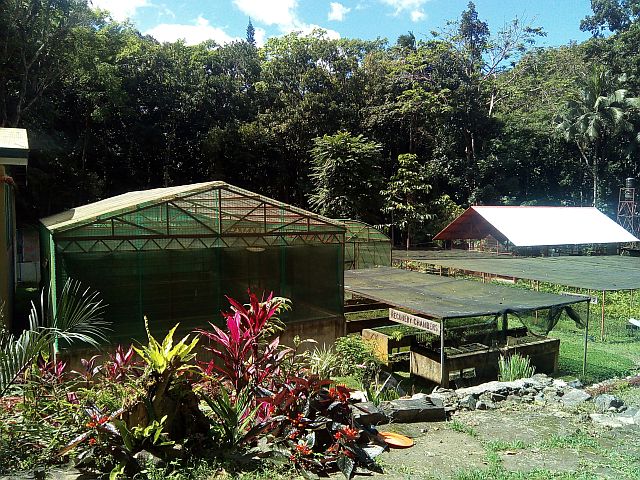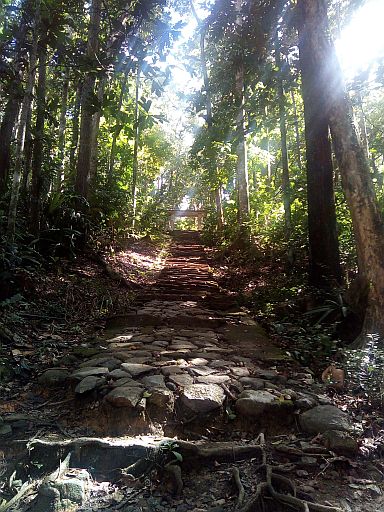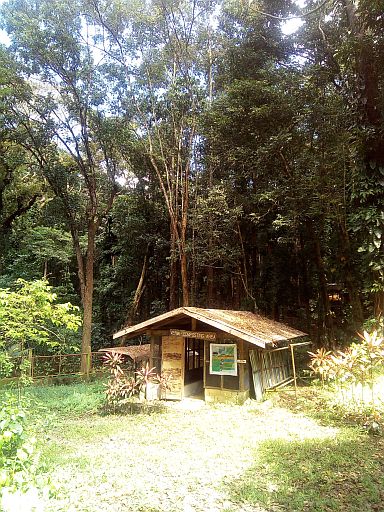DENR, Co-op work together on refo project

The vermi-composting area located inside the clonal nursery of the experimental forest of the Osmeña Reforestation
Project is an example of how the DENR and local communities work together to address waste management and curb illegal activities. (CDN PHOTO/CRIS EVERT LATO-RUFFOLO)
Up in the mountains of Minglanilla, southern Cebu, is a 100-year-old reforestation project of the Department of Environment and Natural Resources (DENR) which embarked on sustainable ecotourism and biodiversity initiatives with the help of a women-led cooperative.
The Osmeña Reforestation Project (ORP), covering 2,710 hectares of land, was part of the Friar Land Estate of Talisay and Minglanilla when the Philippines purchased it from the Vatican.
Despite conservation efforts being undertaken by government, the forest is still being threatened by charcoal extraction, illegal tree cutting, sand/gravel and black stone extraction, wildlife hunting and bamboo harvest.
But working with local communities and people’s organizations, like the Camp 7 Non-timber Planters Multipurpose Cooperative, has helped DENR protect and conserve the ORP.
Hand in hand with the private sector, the reforestation project is being tightly monitored to prevent illegal activities from undermining efforts to protect the land.

Century-old trees live in the forest of Minglanilla located within the Osmeña
Reforestation Project. (CDN PHOTO/CRIS EVERT LATO-RUFFOLO)
“Our relationship with the local residents is very important because they are the direct beneficiaries of whatever projects that will happen in the area,” said Dr. Alicia Lustica, former regional technical director of DENR Western Visayas and now officer in charge of the Biodiversity, Coastal, Wetlands and Eco-tourism Research Center (BCWERC) in the Visayas.
BCWERC is an agency under the Ecosystem Research and Development Bureau of the DENR.
“They (local residents) are also the laborers in our clonal nursery and they are active participants in our activities,” Lustica added.
Trees inside the ORP live in varied density and biodiverse communities.
The top 10 tree species, namely teak, gmelina, lumbang, lanutan, narra, antsoan, dilau, Benguet pine, banaba and auri, are a combination of native and introduced trees.
With its rich biodiversity, DENR saw the need to open the 123.4-hectare Cebu Experimental Forest (CEF) within the ORP.
CEF offers ecotourism tours to the public as another way for DENR’s partner cooperative to earn money.
Members of the cooperative are trained in seed production, cave management and ecotourism.
The Movement for Livable Cebu (MLC), through its representative Louella Alix, trained the women members on basic food preparation and how to make use of available resources to make native dishes and drinks that will be served to guests before and after their tour.
No plastic utensils and plates are used in the tours.
Spoons are made of coconut shells and bamboo while mahogany wood is used to make forks and serving ladles.
Bamboo poles are made into pitchers and coconut shells into drinking glasses.

The experimental forest of the Osmeña Reforestation Project houses a clonal nursery which studies the growth and
production of tree species. (CDN PHOTO/CRIS EVERT LATO-RUFFOLO)
The BCWERC has identified three trails from easy to adventurous.
The Kiddie Trail is a short guided walk covering 240 meters that is recommended for students.
The one-hour Eco-Discovery and Heritage Trail features an annotated walk with a guide who will talk about the ORP history and the forest ecosystem.
The third trail called Ecstasy Trail runs for 45 minutes and features spelunking experiences covering two of the seven caves within the ORP.
Lustica said the ORP now houses a forest clonal nursery, bamboo gallery and tree seed center.
“All of these are important so we make sure that the initiatives we have here in biodiversity conservation and research are done properly,” said Lustica.
On January 13, 1916, the Philippine Legislature passed Act No. 2640 which set aside P10,000 for the ORP and its reforestation awareness programs.
Disclaimer: The comments uploaded on this site do not necessarily represent or reflect the views of management and owner of Cebudailynews. We reserve the right to exclude comments that we deem to be inconsistent with our editorial standards.




